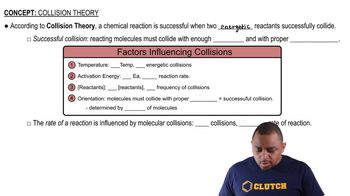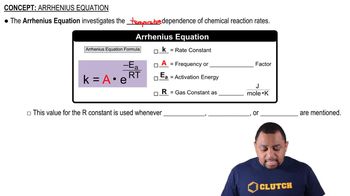Textbook Question
Trans-cycloheptene 1C7H122, a strained cyclic hydrocarbon, converts to cis-cycloheptene at low temperatures. This molecular rearrangement is a second-order process with a rate constant of 0.030 M-1 s-1 at 60 °C. If the initial concentration of trans-cycloheptene is 0.035 M: (c) What is the half-life of trans-cycloheptene at an initial concentration of 0.075 M?




